I want to change the brown areas to RED (or another color). Just I don't know how to get the ranges for brown and put them in python code. I know how to change a single color, but not a range of colors. Any Ideas? Thanks
- 20,118
- 13
- 80
- 87
- 191
- 1
- 3
- 7
-
1Change/read image to HSV-color space array and manipulate only colors (hues) in brown color band. – Mika72 May 07 '18 at 08:49
-
You could also use the [`inRange`](https://docs.opencv.org/3.4.1/d2/de8/group__core__array.html#ga48af0ab51e36436c5d04340e036ce981) function to extract a mask based on your color range, then use the mask to change the pixel values in the image. – zindarod May 07 '18 at 09:39
2 Answers
This should give you an idea - it is pretty well commented:
#!/usr/local/bin/python3
import cv2 as cv
import numpy as np
# Load the aerial image and convert to HSV colourspace
image = cv.imread("aerial.png")
hsv=cv.cvtColor(image,cv.COLOR_BGR2HSV)
# Define lower and uppper limits of what we call "brown"
brown_lo=np.array([10,0,0])
brown_hi=np.array([20,255,255])
# Mask image to only select browns
mask=cv.inRange(hsv,brown_lo,brown_hi)
# Change image to red where we found brown
image[mask>0]=(0,0,255)
cv.imwrite("result.png",image)
How did I determine the limits for "brown"? I located a brown area in the image, and cropped it out to remove everything else. Then I resized it to 1x1 to average all the shades of brown in that area and converted it to HSV colourspace, I printed that and took the value for Hue which was 15 and went +/-5 to give a range of 10-20. Increase the range to 8-22 to select a wider range of hues.
HSV/HSL colourspace is described on Wikipedia here.
Keywords: Image processing, Python, OpenCV, inRange, range of colours, prime.
- 191,897
- 31
- 273
- 432
-
-
1@aph They are both HSV. You can tell because I applied `cv.inRange()` to the HSV image. – Mark Setchell Sep 14 '21 at 12:14
I would like to propose a different approach. However, this will work only for a range of certain dominant colors (red, blue, green and blue). I am focusing on the red colored regions present in the image in question.
Background:
Here I am using LAB color space where:
- L-channel: expresses the brightness in the image
- A-channel: expresses variation of color in the image between red and green
- B-channel: expresses variation of color in the image between yellow and blue
Since I am interested in the red region, I will choose the A-channel for further processing.
Code:
img = cv2.imread('image_path')
# convert to LAB color space
lab = cv2.cvtColor(img, cv2.COLOR_BGR2LAB)
# A-channel
cv2.imshow('A-channel', lab[:,:,1])
If you look at the image closely, the bright regions correspond to the red color in the original image. Now when we threshold it, we can isolate it completely:
th = cv2.threshold(lab[:,:,1],127,255,cv2.THRESH_BINARY + cv2.THRESH_OTSU)[1]
Using the th image as mask, we give a different color to the corresponding regions in white:
# create copy of original image
img1=img.copy()
# highlight white region with different color
img1[th==255]=(255,255,0)
Here are both the images stacked beside each other:
You can normalize the A-channel image to better visualize it:
dst = cv2.normalize(lab[:,:,1], dst=None, alpha=0, beta=255,norm_type=cv2.NORM_MINMAX, dtype=cv2.CV_8U)
In this way, there is no need to look for range in HSV space when working with dominant colors. Exploring the B-channel can help isolate blue and yellow colored regions.
- 20,118
- 13
- 80
- 87






